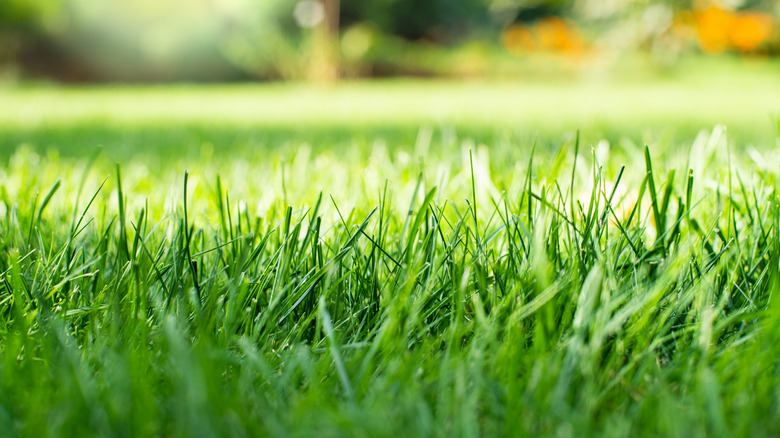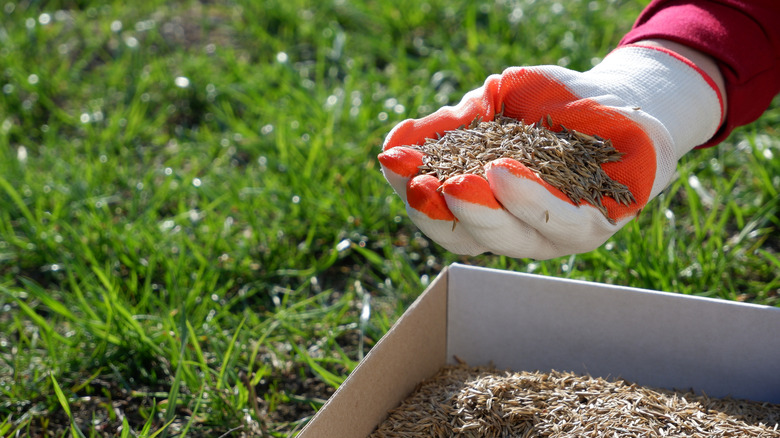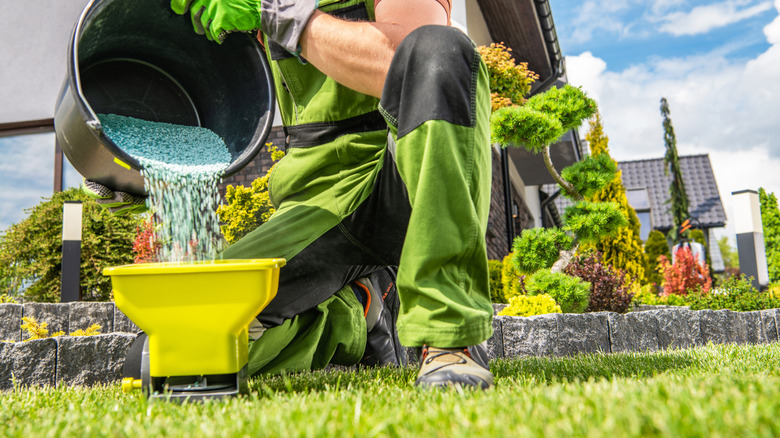Grass Seed Vs. Fertilizer: Which One Should You Start With For A Luscious Lawn?
Every homeowner would love a beautiful, thick lawn, but creating the best lawn seed and fertilizer schedule requires a lot of work and some strategic planning. Grass seed and fertilizer serve very different purposes. Seed introduces new grass to help fill in any bare spots, while fertilizer feeds existing grass, promoting thicker growth. Using them together isn't always advisable, as some fertilizers contain herbicides that can ruin seed germination. It's important to observe your lawn before deciding and figuring out what exactly is needed. If it's the lack of grass coverage, go with seeds; if it's weak or brown growth, use fertilizer.
Seasons also matter; depending on the grass type, early fall or spring can be the perfect time for seed germination. The decision between starting with grass seed or fertilizer isn't just about timing; it's about understanding your lawn's current condition and needs. One of the first steps is getting a soil test to know exactly what your lawn needs. If your soil has some nutrient deficiencies, fertilizer might be the best thing to use first. If the soil is fine but you've got patchy areas, seeding may be the way to start.
Why grass seed should sometimes come first
Going with grass seed first makes sense when starting fresh or dealing with multiple bare patches in your lawn. Fresh seed can establish strong roots in the topsoil without competing with the grass already there. Choosing from the different types of grass seed, as well as knowing when actually to use it, depends on your region and lawn type. Cool-season grass, like Kentucky bluegrass, is best to seed in the early fall, and warm-season grass, like St. Augustine, should be seeded in late spring. This allows the specific type of grass to take root better during its preferred season.
Using grass seed first does have some disadvantages. New grass requires constant attention, demanding light watering up to two or three times per day. If employed at the same time, this excessive watering could wash away unabsorbed fertilizer, wasting your time and money. Many starting fertilizers also contain quick-release nitrogen, which can burn delicate seedlings. There is also the lawn maintenance waiting period; you'll need to delay mowing for around 4 to 6 weeks or until your new grass seeds reach around 3 inches tall. This waiting period could allow your existing grass time to grow unruly if fertilized in conjunction with sowing.
For best results with a seed-first approach, mow the entire lawn before seeding and use a slow-release fertilizer 6 to 8 weeks after. This gives the roots time to dig in, and they can better utilize the fertilizer's nutrient boost without the risk of burning.
When to feed before you seed
Fertilizing should take priority when you are dealing with an established lawn that is starting to thin or turn pale. The nutrient boost fertilizer provides can revitalize tired grass, helping it spread thicker to fill in any gaps. This works well with warm-season grasses like Bermuda that spread aggressively when properly fed. Fertilizing in the spring helps promote grass's natural growth surge, while early fall use strengthens roots before the winter comes. Slow-release fertilizers are a great way to give your grass steady nutrition over a couple of months and avoid the aggressive boost that quick-release formulas provide.
Using fertilizer first has its limitations as well, though. Over-application can lead to too much growth at the expense of strong roots, creating a lawn that looks flush initially but struggles during the dry summer months. There are also some weed-and-feed products that contain pre-emergent herbicides that ruin young seed germination, including grass. There is also a risk of runoff if rain or overwatering happens soon after application, especially if your lawn is sloped and you water your grass on a hill.
If you fertilize first, it's important to give the fertilizer time to do its job and allow any herbicides to break down before seeding. This way, the new seed can still benefit from residual soil nutrients without the risk of being hurt by the fertilizer.


